Beyond Imitation and Influence
Anyone familiar with the art world will likely know of the infamous husband-and-wife duo, John and Helen Elgersma, who were at the center of one of the most notorious cases of art forgery. They created works that mimicked the appearance of centuries-old masterpieces, aging them artificially to pass them off as original pieces by old masters, including Rembrandt and Vermeer. Their scheme deceived unsuspecting collectors and galleries, allowing them to amass a huge profit. However, in 1991, art experts discovered discrepancies in the materials and techniques used in the paintings, exposing the fraud.
While this story highlights an egregious case of forgery, there is another, more pervasive issue in the art world today that demands attention: plagiarism. From established masters like Mark Rothko and Jean-Michel Basquiat to emerging talents, artists are finding their work appropriated, imitated, and even outright copied. This practice undermines the very essence and value of art.
The act of plagiarism in art transcends mere imitation and influence; it signifies a profound violation of artistic authenticity. Just as Jean-Michel Basquiat’s raw, unfiltered expression cannot be genuinely captured through mere replication, so too does every artist’s work embody a unique interplay of personal experience and cultural dialogue. To attempt to replicate Basquiat’s distinctive style without engaging with his lived experiences and socio-cultural context is to strip away the core of his artistic identity, reducing his art to superficial mimicry. Thus, plagiarism not only undermines the integrity of the art form but also diminishes the human expression that art strives to represent.
Art reflects an artist’s unique vision and personal journey—a vision and journey that, in most cases, have taken years to develop. Copying another artist’s style, motifs, or concepts dilutes the originality and meaning behind the work. This relegates art to mere technique and turns original creations into derivative works that lack the authenticity and depth of the originals.
In addition to the moral and artistic issues raised by plagiarism, there are also important legal considerations. Copyright laws protect original works of art from unauthorized copying or reproduction - even individual elements within a work, such as motifs, designs, or specific artistic choices, can also be protected by copyright. In the United States, for instance, copyright protection lasts for the life of the artist plus 70 years. For an artist like Jean-Michel Basquiat, who passed away in 1988, this means his works are protected until 2058. Anyone wishing to use elements of Basquiat's work, such as his iconic crown motif, must obtain permission from the copyright holder—typically his estate. Creating derivative works based on copyrighted material without permission can lead to significant legal consequences.
The responsibility for combating plagiarism doesn’t lie solely with artists. Art critics, galleries, and other gatekeepers in the art world also play a crucial role. Unfortunately, many in the industry lack a deep understanding of art history, leading to the promotion of derivative works. It is imperative for these gatekeepers to be vigilant to maintain the integrity of the art market. Artists and collectors alike should be wary of galleries that exhibit works too similar to those of well-known artists; such galleries may not have the necessary knowledge to discern true originality, nor the respect for the art form required to uphold its integrity.
Throughout my years in the industry, I have repeatedly encountered instances of artwork being plagiarized—whether at art competitions, festivals, fairs, or gallery exhibitions. This ongoing issue poses a significant challenge to the integrity of the art world. The rise of online platforms has made it easier than ever for artists to access and share their work. While this has democratized the art world, it has also created new opportunities for plagiarism.
Remember, originality is not just about avoiding copying others; it’s about expressing a unique and authentic perspective on the world. By prioritizing originality and authenticity in art, we all contribute to the richness and diversity of the art world and maintain its value.
Addressing the issue of plagiarism and encouraging originality is essential for creating a more vibrant and ethical art ecosystem. For collectors, it’s imperative to consult experienced art advisors. Don’t hesitate to ask probing questions to gauge their knowledge, not only of contemporary art but also of the movements that have shaped the art world throughout history.
By fostering a culture that values originality and the essence of art-imagination, innovation, and expression-we can protect the integrity of the art world and ensure that creativity and authenticity continue to thrive.
Connect with our knowledgeable and experienced art advisors at Artly International. Visit our art advisory page to learn more or contact us now for a complimentary consultation.




Leave a comment